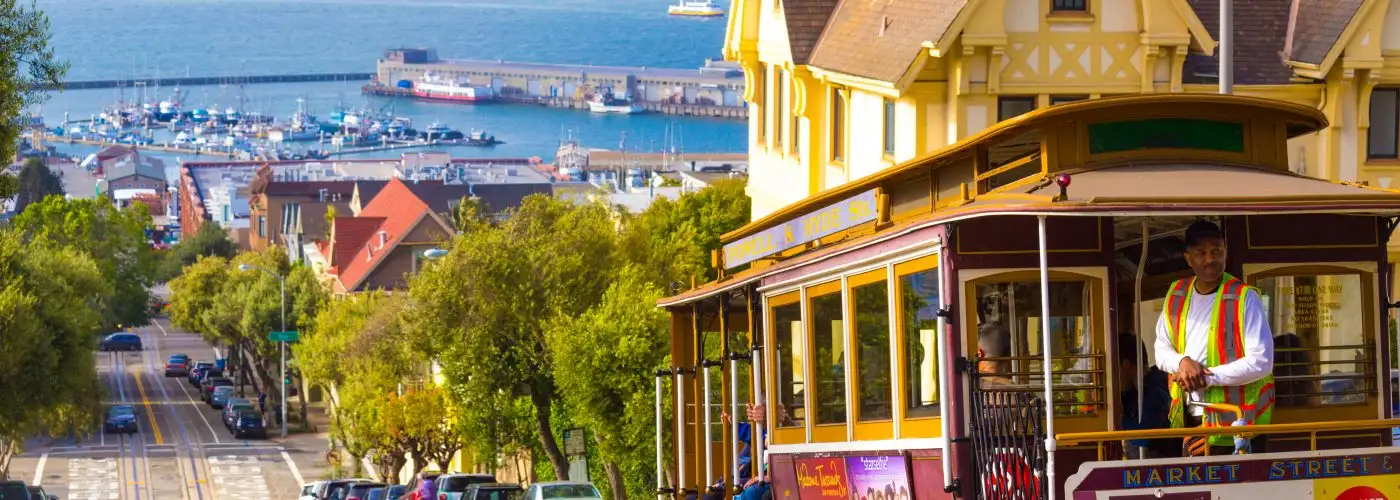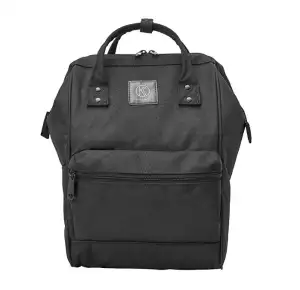Warnings and Dangers in San Francisco
San Francisco earns its rightful place as a traveler favorite thanks to its natural beauty, cultural offerings, and thriving food scene. And even though San Francisco is, by and large, quite a safe place for visitors, the City by the Bay does have areas that are best avoided.
It’s comforting to know that the violent crime rate in San Francisco is lower than in many popular tourist destinations in the U.S., including Las Vegas, Chicago, Orlando, and Washington, D.C. However, certain types of property crime—car break-ins, most notably—are significantly higher than average. And San Francisco also struggles, in a very public way, with homelessness.
Below, find our advice about areas to avoid in San Francisco, as well as good tips for being a smart and safe tourist in San Francisco.
Tips for Staying Safe in San Francisco
- Know where you’re going. Although San Francisco is mostly safe, there are neighborhoods that can be tricky to navigate, including the Tenderloin, the Mission, and sometimes Union Square. In these parts of the city, being on high alert can keep you out of trouble.
- Don’t bring a car, if you can help it. Car break-ins are extremely common in San Francisco, and it’s actually easier to get around the city using hired cars and public transportation. If you want to take a side trip, simply rent a car for the day. You’ll save money on parking and you won’t have to worry about car security while you’re in San Francisco.
- Prepare for a visible homeless problem. It’s almost impossible to visit San Francisco without encountering transient people. The SFPD even has a special unit to address this massive issue, and the official police advice for interacting with the unsheltered population is to avoid confrontations, maintain a safe distance, and call the police or 911 if you witness a crime or emergency involving homeless people.
Top Travel Safety Products for San Francisco
Should You Go: San Francisco Neighborhoods
The Tenderloin—long a neighborhood known for its street drug trade—borders some of San Francisco’s most prominent shopping and tourist districts, and is home to a number of famous music and theater venues as well as restaurants. Walking through the Tenderloin, it’s common to be approached by panhandlers, some of whom can be aggressive. During the day, navigating this area requires extra care; at night, however, many visitors prefer to avoid walking in this neighborhood for more than a block or two.
Union Square, adjacent to the Tenderloin, is a relatively safe district but is also a crowded shopping area, and pickpockets are active—so keep your valuables under wraps.
While some travelers who prefer to stay within the confines of San Francisco’s most touristed quarters may consider the Mission a bad area of San Francisco, visitors looking for the city’s richest mix of arts, culture, and food should consider a visit to this thriving neighborhood. But recognize that the Mission can be a confusing mix of gritty and glam for first-time visitors. If you go, decide on your destinations in advance. If you drive, expect parking to be very challenging—and be sure to hide valuables and lock your vehicle. Here, as elsewhere in San Francisco, car break-ins are rampant.
Overall, most San Francisco neighborhoods are not dangerous. But if you want to be sure you’re sticking to the safest areas for tourists, Fisherman’s Wharf and Chinatown have low crime rates and are fun to visit too.
How to Get Around Safely in San Francisco
San Francisco’s property crime rate is more than double the U.S. average, due in large part to the fact that car break-ins are rampant within city limits. That’s reason enough to leave your car at home, but add to that the fact that San Francisco’s traffic has gotten much worse since the city’s tech boom, that the steep hills are tough to navigate, and that cable cars and streetcars have the right of way, and you’ll likely find it’s more difficult to drive in San Francisco than elsewhere.
Instead, use public transportation. Know, though, that BART and Muni have things to be wary of too: Beware especially of pickpockets—according to police data, you’re most likely to get ripped off on the 30-Stockton bus that runs through Chinatown; on the tourist-favorite F streetcar; and on a few other bus lines, including the 38, 41, and 45. Also know that there have been issues with biohazards like needles and human waste, as well as occasional scuffles on BART—walk into another car in case a conflict breaks out on yours. BART administrators are working on many projects to improve cleanliness and safety throughout the system.
Taxis in San Francisco are relatively safe, and ridesharing services are under more scrutiny, with beefed-up background checks ever since a terror suspect was found to have been a registered Uber driver.
Homeless People in San Francisco
California has a higher percentage of “unsheltered”—people living outside, in tent encampments, or cars—than other states. And while homeless numbers in San Francisco are not significantly higher than in other major cities, overburdened shelters and a lack of affordable housing in the Bay Area mean that homeless people are more visible in San Francisco than elsewhere.
The intersection of Turk and Taylor streets, in the Tenderloin, is particularly dense with people who live on the street, so if you’re planning on visiting this San Francisco neighborhood, be prepared to encounter panhandlers and transients, many of them struggling with drug addiction or alcoholism.
Unlike cities where homeless people are relegated to a single neighborhood, San Francisco has visible homeless populations throughout the city. For this reason, there’s no single area to avoid in San Francisco if you’d rather not deal with panhandlers. Here and elsewhere, there’s a correlation between homelessness and psychiatric issues, and tourists are often unprepared for—and upset by—interactions with mentally ill transient people.
The SFPD operates a special unit to deal with this complex problem, and also provides succinct advice for interacting with homeless people: “Avoid all confrontations and maintain a safe distance.” And, the department advises, call the police or 911 if you witness a crime or emergency involving homeless people. However, a little kindness can go a long way; San Francisco’s street people are almost always grateful and gracious when passersby share spare change, food, or a warm smile.
More from SmarterTravel:
- San Francisco Travel Guide
- 10 Best Hotels in San Francisco
- 10 Best Cheap Hotels in San Francisco
- The 10 Coolest Boutique Hotels in San Francisco
- 10 Must-See San Francisco Attractions
- The 9 Best Day Trips from San Francisco
- 10 Best Things to Do in San Francisco
- San Francisco with Kids: 9 Kid-Friendly Activities in San Fran
- 12 Best Museums in San Francisco
- San Francisco Shopping: A Traveler’s Guide
- San Francisco Food: 9 Specialties You Have to Try
- 10 Best Cheap Eats in San Francisco
- 10 Best Vegetarian and Vegan Restaurants in San Francisco
- What to Wear in San Francisco
- What to Pack for San Francisco
—original reporting by Avital Andrews
We hand-pick everything we recommend and select items through testing and reviews. Some products are sent to us free of charge with no incentive to offer a favorable review. We offer our unbiased opinions and do not accept compensation to review products. All items are in stock and prices are accurate at the time of publication. If you buy something through our links, we may earn a commission.
Related
Top Fares From
Today's Top Travel Deals
Brought to you by ShermansTravel
Kenya: 14-Night Tour, Incl. Tanzania &...
smarTours
 vacation
$7125+
vacation
$7125+
7-Night Caribbean Round-Trip Cruise From Orlando:...
Norwegian Cruise Line
 cruise
$789+
cruise
$789+
Ohio: Daily Car Rentals from Cincinnati
85OFF.com
 Car Rental
$19+
Car Rental
$19+







